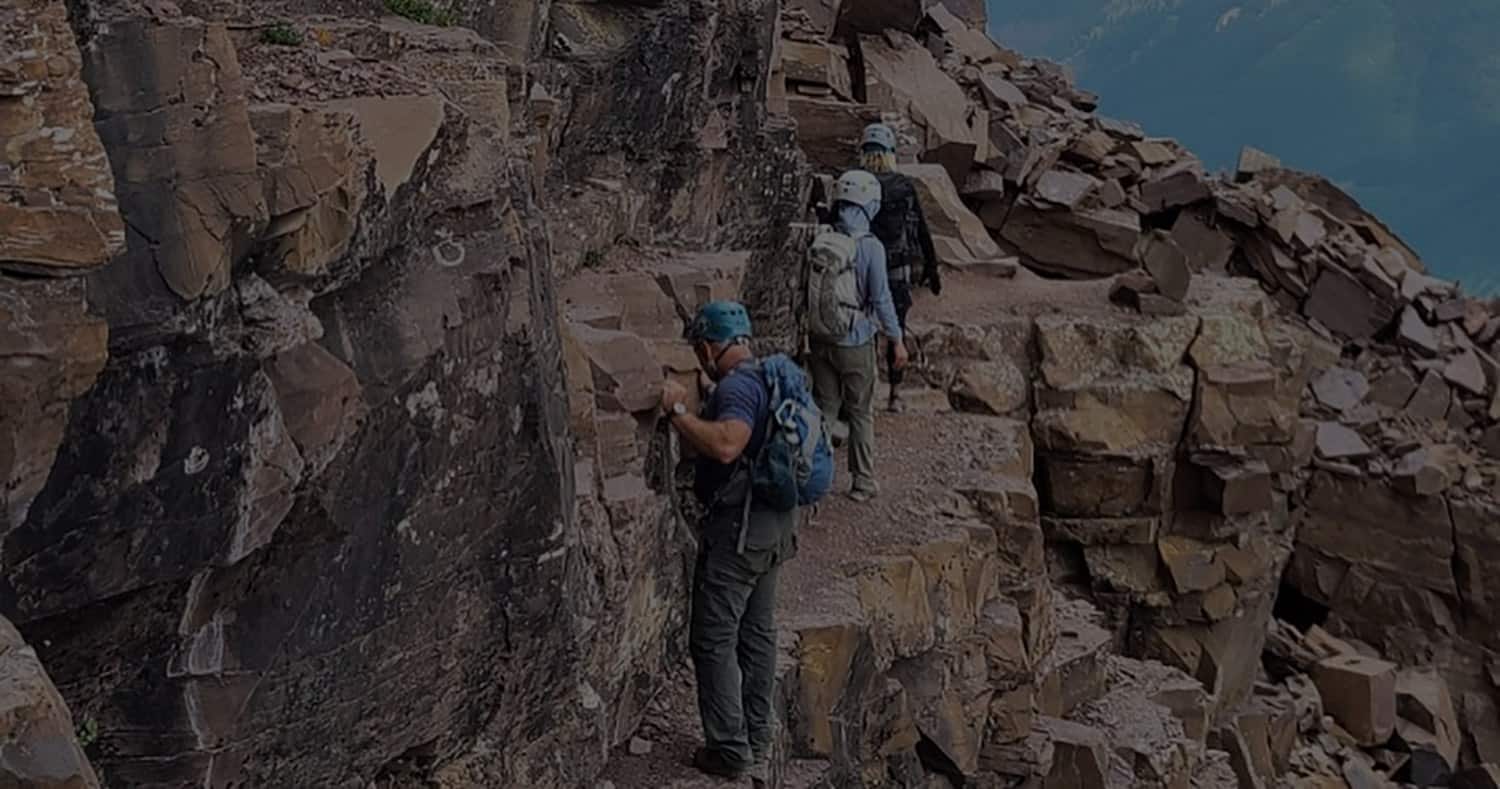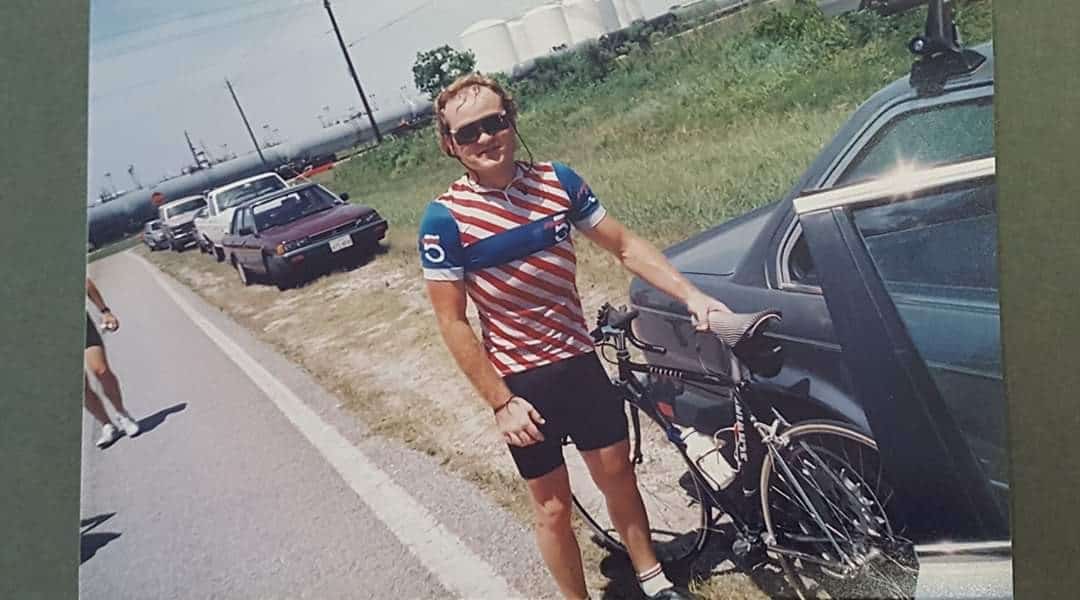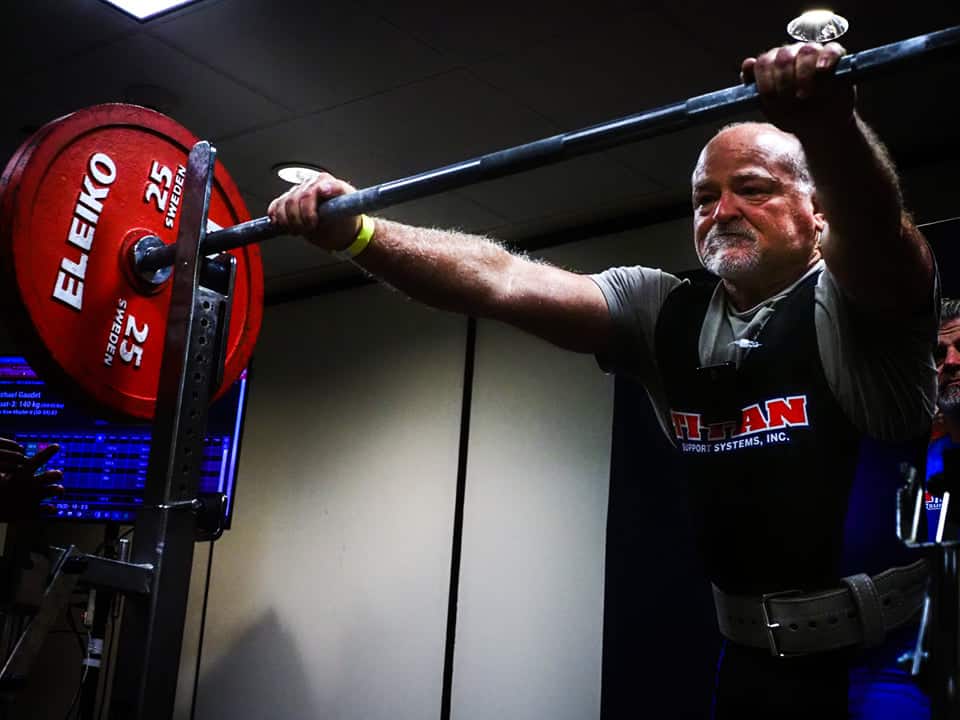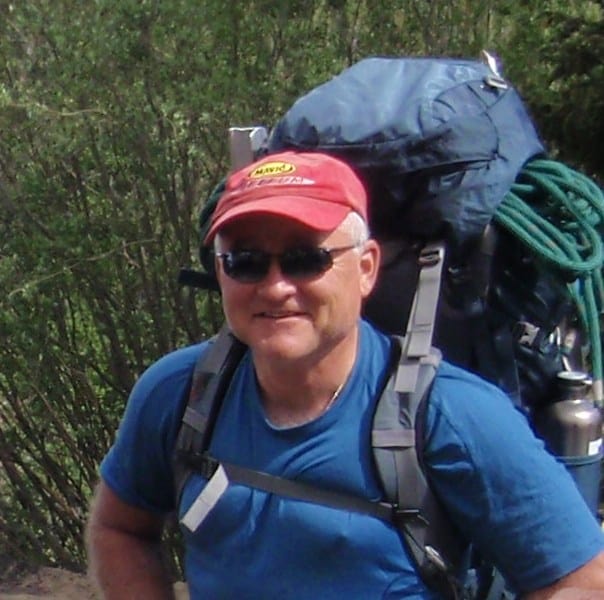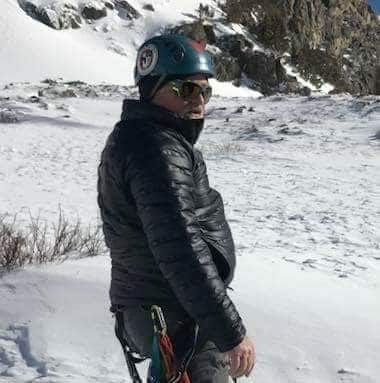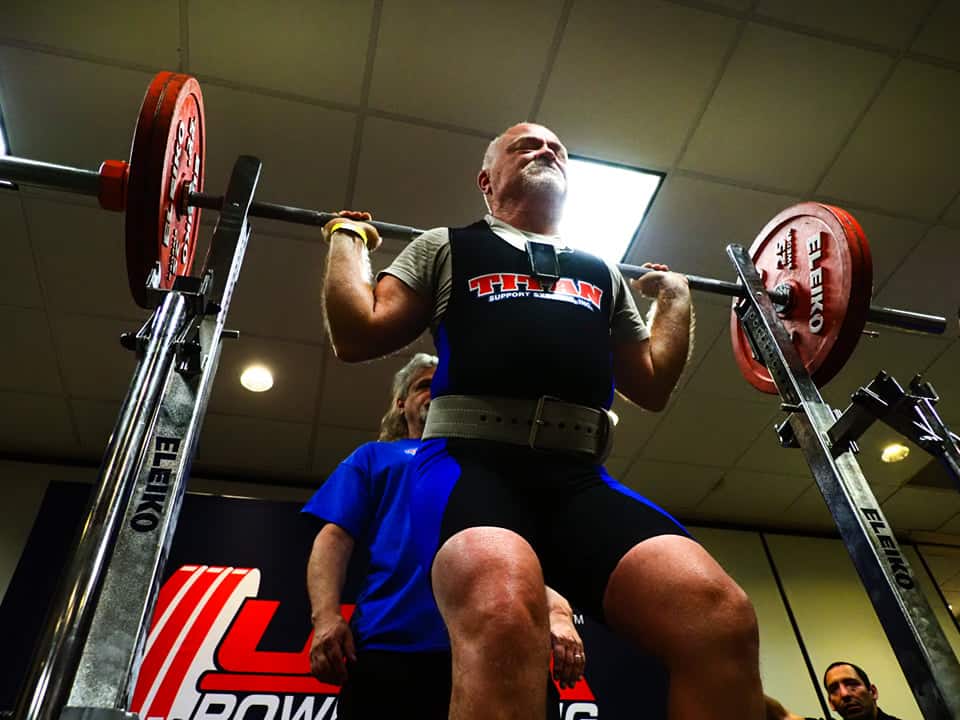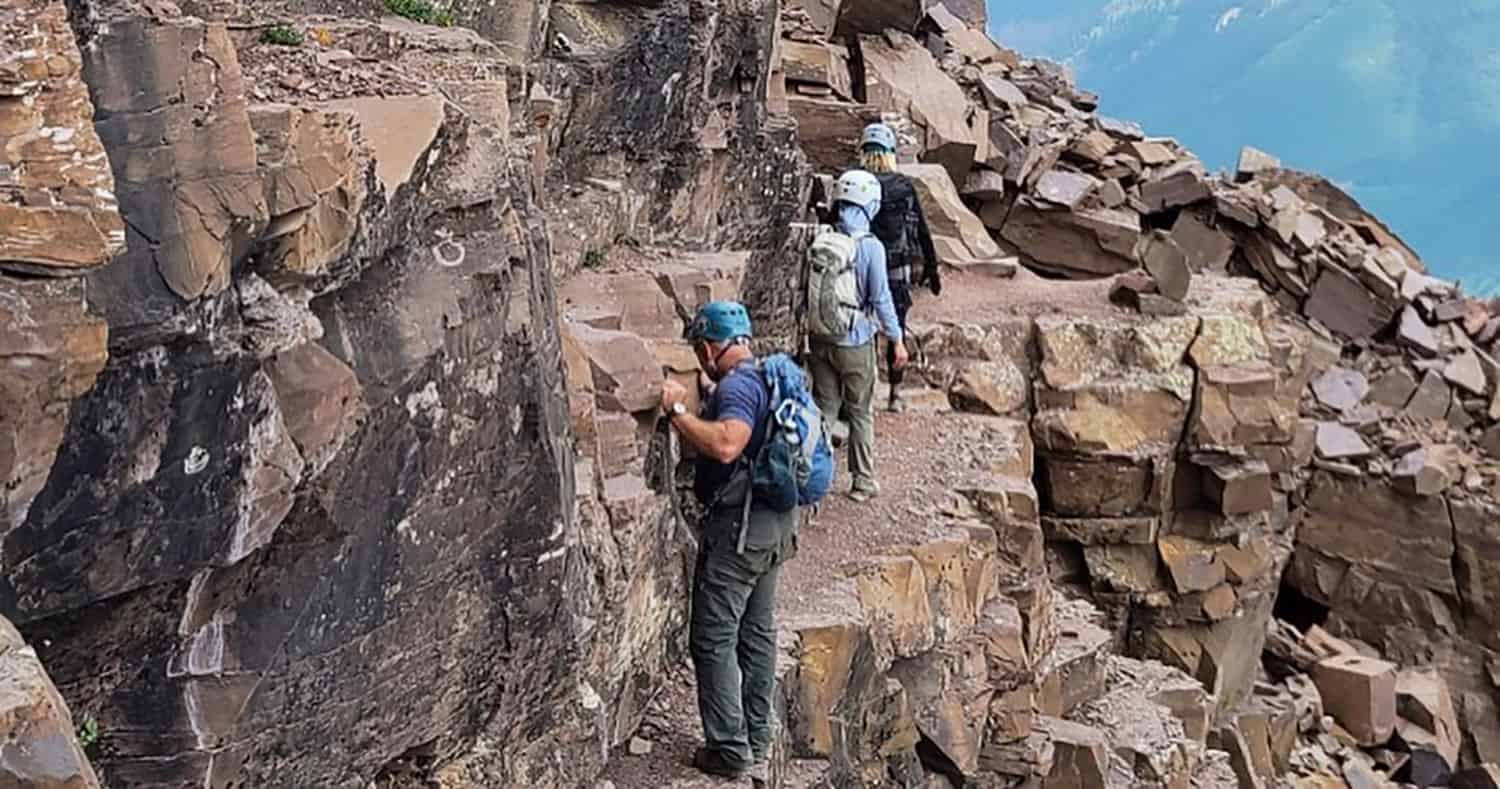This blog is part of the Living Without Limits series featuring conversations with CIM community members who engage in fun, challenging, and adventurous activities and careers. This post highlights Michael Gaudet who talks about powerlifting and mountaineering with type 1 diabetes. He has also been involved in cycling and car racing.
Eleanor: First, could you tell me a little bit about your diabetes story?
Michael: I got type 1 in 1977. I went to the hospital with the usual conditions, I had lost a lot of weight when I was already a pretty small guy. When the doctor found out I had type 1, she said my life expectancy was 50. But I’m 57 now! Back then, insulin was pretty poor, and we didn’t have blood glucose meters. It was kind of ridiculous, actually.
I spent a week in the hospital. The day I left the hospital, I went to a friend’s house and played basketball and I started cycling around the neighborhood. I learned pretty quickly that the more I exercised, the better I felt. Even with the poor insulin and not knowing what my blood sugar was.
That sounds really challenging to manage without meters or anything!
Yeah, it was pretty tough. Back then, you really went by feel more than anything else. I think I got my first blood glucose meter when I went to college, or maybe a little after that. Once we got good insulin, I was MDI for a bunch of years. About 6 or 7 years ago, I went to the pump. Now I’m on the G6 and t:slim with Control IQ which is unbelievable. I did a big hike yesterday for 11 hours and my blood sugar was pretty stable the whole time.
What sports have you been involved in?
Pretty soon after being diagnosed, I started racing bicycles. I was an endurance cyclist for at least 25 years. I think I started when I was 16 and I think I raced my last bicycle race at 41 or 42. Most of my life I’ve been an athlete. I then got into car racing and did that for a bunch of years. Also, in my twenties, I started doing some climbing. I climbed Mount Shasta when I was 21 or 22. 4 years ago, I picked up power lifting so I’m also a strength athlete as well. I compete in powerlifting meets and enjoy that.
When did you get more involved in mountaineering?
My wife’s from Colorado, and when we moved back to Colorado 14 years ago I knew I would get back into climbing again. I Immediately started climbing and have been doing that for the last 14 years.
I did a lot of stuff solo at first. I climbed Longs Peak which is in Rocky Mountain National Park. It’s a long, long hike. It’s 12 hours, 15 miles, 5500 ft. elevation gain. I did it solo. It was almost a religious experience for me. It was so intense, and so cool.
After that, when I got down off the mountain, my wife was concerned about me going up by myself. She said, “if you’re going to start doing this, you’ve gotta learn some skills.” She got me a membership to the Colorado Mountain Club. I immediately started taking some of their classes. I got through their basic mountaineering class, which teaches you how to use a rope for protection, rock climbing, different types of ice climbing, and snow climbing. I climbed Mount Rainier that year for my first time. The year after that, I actually started teaching classes. I’ve been teaching now for about 10 years and I’m one of the club’s senior instructors. I’m also a trip leader with the club, so I go out and lead trips.
In Colorado, there’s 58 14ers. After my most recent successful summit, I’ve completed 52 of the 58. I only have a few left, which I’m hoping to finish soon.
How do you manage your diabetes when you go mountaineering? Are there any special considerations you have to make?
I can tell you how it went this past Sunday to get an idea:
We woke up at 2 am. I drank some coffee and didn’t eat anything. At 3 am, I changed my settings on my pump to what I call my “hike profile” which is about 60% of my normal basal. I think it is important to start a hike with no insulin on board. We drove to the trail head, and started up the trail at about 4 am (We left so early because we were expecting storms later in the day). I didn’t eat anything right away. About an hour into the hike, my blood sugar was still good but I decided to eat a little bit of carbohydrate (less than 10 g). At that point, I was good for the next few hours. Control IQ was running–I use sleep mode 100% of the day. With just normal hiking, my blood sugar tends to drop a little bit. But climbing gets to be a lot more anaerobic and there’s more stress so it kind of balances out, at least for me. Everyone is different! Sometimes my blood sugar actually goes up a little bit. I definitely see that powerlifting, too. Throughout the day, whenever we had a chance to take a break, I ate a little bit. When we got back to the parking lot, by that point I was a little bit dehydrated so my blood sugar started to rise a bit…Got home about 9 o’clock and rehydrated while my blood sugar came down.
I do a lot of winter stuff, that’s a little bit more challenging because you have to watch for your insulin freezing, especially if you’re doing multiple days. Sometimes the CGM goes out in cold weather, and checking your BG with a meter at 13,000 ft in freezing temperatures is pretty tricky. That makes it hard because you have to warm it up before it even lets you use it. I’m the kind of person that doesn’t get very cold, so as long as I keep my pump in my pocket and keep my insulin inside of a parka or sleep with it in the sleeping bag, I haven’t had too many issues. I’ve been worried that my insulin has frozen, but it’s never really happened to me that it’s gone bad. Also, if you’re out multiple days and have a pump, you have to bring a power system. I bring a battery pack to plug my pump into.
Because I’ve had diabetes for so long, my sensitivity to low blood sugar is pretty much non-existent. I can get down to 45-50 mg/dL and not feel it, then all of a sudden I’m down for the count. But of all the climbs I’ve done, and all the mountaineering I’ve done, I’ve never had to have help responding to low blood sugar in the backcountry. I carry Baqsimi with me in my pack. I don’t really go out solo too much anymore, and all my hiking partners know where it’s at. If something were to happen, they could revive me. We hike hours away from any type of search and rescue response, so it’s really important to have your partners know what to do and look for signs of low blood sugar.
When I did Rainier for the second time, I wasn’t on the pump yet and I took too much Lantus the day before. We had a pretty hard day getting up to camp Sherman. We were getting ready for Summit Day at midnight and my blood sugar was low. It was in the 40s, and I couldn’t get it up. I decided to eat something and start up the mountain with the team to see if I would recover. We started at about 10,000 ft and got up to about 12,000 ft, but my blood sugar was still low. I told my teammates, “I can’t continue, I can’t get my blood sugar straight”. One of the other guys on the team and I roped up and headed back down. The other 3 guys on the team continued to the summit and were successful. But that happens! You’re not going to get to the summit every single time, and in that particular case, it was diabetes-related. The first time I did Rainier, my blood sugar was fine all 16 hours of the summit day, and that was on MDI.
What about with car racing?
My specialty was long distance endurance racing, so I would be in the car for 3 straight hours. That’s tough. You’re sweating profusely in a nomex suit in the middle of summer. I didn’t have a CGM at the time. I had to be really careful with my blood sugar before I got on the track. As long as it was in pretty good shape and not too low, it was okay. I knew during the race because of the adrenaline, my blood sugar typically went up not down. Powerlifting is kind of the same way.
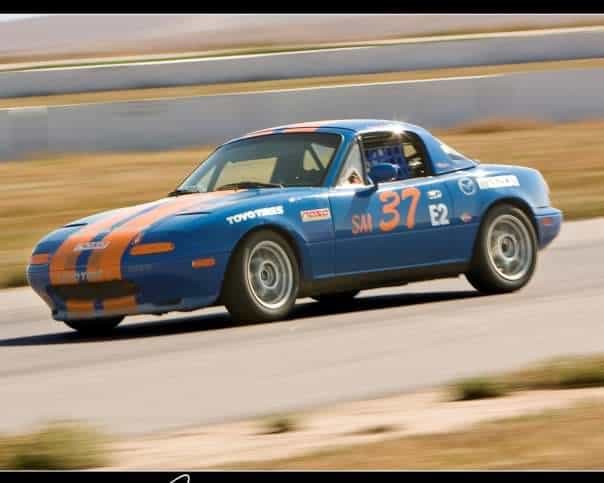
SCCA Enduro, High Plains Raceway, 2008a
Do you find there is a stigma against people with diabetes doing the activities you’re involved in? Did you ever receive any pushback?
Not really, but my wife is concerned about me experiencing a low blood sugar in the backcountry. Most of the time I can take care of a low blood sugar myself, and I’ve shown that I can. I’ve gotten low blood sugars at night with my wife and she’s had to use glucagon on me a couple times, but never in the backcountry before.
With the Colorado Mountain Club, I have to take Wilderness First Aid every year. I’m always the one that stands up in front of the group when we start talking about diabetes. I show everyone my pump, and I show them Baqsimi. I tell them how to treat a low blood sugar and tell them never to mess with anyone’s pump.
I’ve never had a problem with work, I always tell my safety people at work that I have diabetes and where my emergency supplies are. I’ve never personally felt like anyone was telling me, “don’t do that”. But when I did car racing through the Sports Car Club of America (SCCA), I had to get doctors to sign off. That’s been the case for anything kind of unusual I’ve done. When I climbed Rainier the first time, I had to get a doctor to sign off too. With powerlifting, because insulin is a banned substance, I have to get a Therapeutic Use Exemption from the World Athletic Doping Association (WADA). Insulin is an anabolic hormone so bodybuilders can use insulin to build muscle when they don’t need it.
Before you started these activities, did you know of anyone with diabetes that did them? Have you since met anyone?
When I started, no. I didn’t know anybody that car raced or bicycle raced. I used to do the Tour de Cure 100 mile bicycle ride. Occasionally there would be a couple of guys that also were diabetic that were doing it. A long time ago there used to be the International Athletic Diabetes Association and I was part of them. But I really didn’t know anybody.
As far as mountaineering, I also didn’t really know anybody. There were some other diabetics in the club, and I did meet a few diabetics on my trips. As a matter of fact, the first pump I ever saw was when a guy that was on one of my trips showed me his pump. I was on MDI at the time and I didn’t know how the pump would work for me. I asked if the tubing would get in the way of climbing. Since I’ve had a pump with tubing, I’ve never pulled a site out while climbing.
Before the CIM Slipstream I did in Colorado, I was kind of in the forest with my diabetes (meaning few people knew I had it). Now it’s kind of strange, it seems like more people have type 1. Every now and then I see a kid with a pump, and I pull out my pump and show it to them and it puts a big smile on their face. I love that! Meeting diabetics in the wild, I think that’s so cool. Or you hear someone else’s Dexcom going off and you think, “I know that sound!”
Where have you received support, knowledge, resources from to help you pursue these activities?
I didn’t really have contact with anyone early on, but my first pediatrician was really good. It was a lot of self-experimentation. My wife is gluten intolerant and she told me to cut back on my carbs and I started doing it and it seems to work really well for me. Then I tried intermittent fasting and I just love the way it keeps my blood sugar flatlined for such a long period of time.
I had a pretty prescribed regime with my doctor for MDI. But I never felt like I couldn’t make my own adjustments. My whole life, my doctors have been very supportive of me making my own adjustments. They knew I was so active that I would have to move things around.
What else have you found helpful in managing your diabetes while mountaineering? Do you have any advice or recommendations for people with diabetes interested in mountaineering?
Know your body, and try different things. Within reason, be safe about it! Your doctors aren’t living in your skin, they don’t have to deal with it minute-by-minute and hour-by-hour. I have a Diabetic Nurse Educator and she has type 1 too, and so she’s very supportive of my athletic endeavors. She gives me the flexibility to make my own changes, and we’ll consult with each other.
10 years ago, I wanted to experience sleeping overnight in winter in case I ever had to do that. I wanted to do it on my own just to make sure that if I ever got in this situation, I could survive the night and know I would be fine. I went to the Rocky Mountain National Park. I didn’t have phone service, it was super cold, and I stayed in a bivouac. Was it a comfortable night? No. It was a miserable night, I hardly slept. But I made it through the night and now I have that knowledge that if I ever got in that situation for real, I wouldn’t be totally freaked out. I could keep my wits and know things would be ok. But everybody’s different–what works for me, might not work for you!
What is your favorite thing about mountaineering?
Mountaineers call it “type 2 fun”, which means you’re ready for it to be over with, but once you’re done, and you get back to the car and eat dinner, you’re ready to do it again. Because you’re suffering–when you’re gaining that much altitude, it’s tough. Sure enough though, when you just finished something really hard and are telling yourself, “I’ll never do that again!”…what are you talking about at dinner? Where you’re going to climb next.
There are moments when you’re out in nature and just on your own with the people you’re hiking with. There’s something extremely liberating about that. I like the time away from distractions. Even with a group, getting that group camaraderie is a really cool thing. I think the coolest thing is when you’re focused literally 5 ft or 10 ft in front of you on the next move that you’re going to make climbing up this rock. You’re not thinking about the past or future. You’re in the present and you’re in this incredible flow state. I get in the same flow state powerlifting, too.
Is there anything you’d like to say to folks living with diabetes that may be feeling hesitant about pursuing certain activities or interests they have like mountaineering?
Start slow–you can start just hiking, or getting out into nature wherever you can. Bring extra supplies, and bring extra food. If you’re first getting into it as a diabetic, make sure you have some people with you. That wasn’t necessarily the way I did it, but I think it’s good to have people with you that know how to respond to low blood sugar. Also make sure you have cell phone service when you’re starting out so if something happens you can call for help. If you start to get more remote, you need some sort of personal locator like a Garmin inReach or Spot. There’s a lot you can learn about hiking from organizations. REI has classes for mountaineering, for example. Everyone responds to altitude differently, so make sure you are used to the altitude change before doing a big hike. For me personally, the tremendous benefit of exercise outweighs the fear of low blood sugar. You can do it! Little by little, you’ll get there.
What is the best way for folks to contact you if they would like to talk more about what you have shared?
You can email me at specmiata37@earthlink.net or send me a direct message on Facebook!

